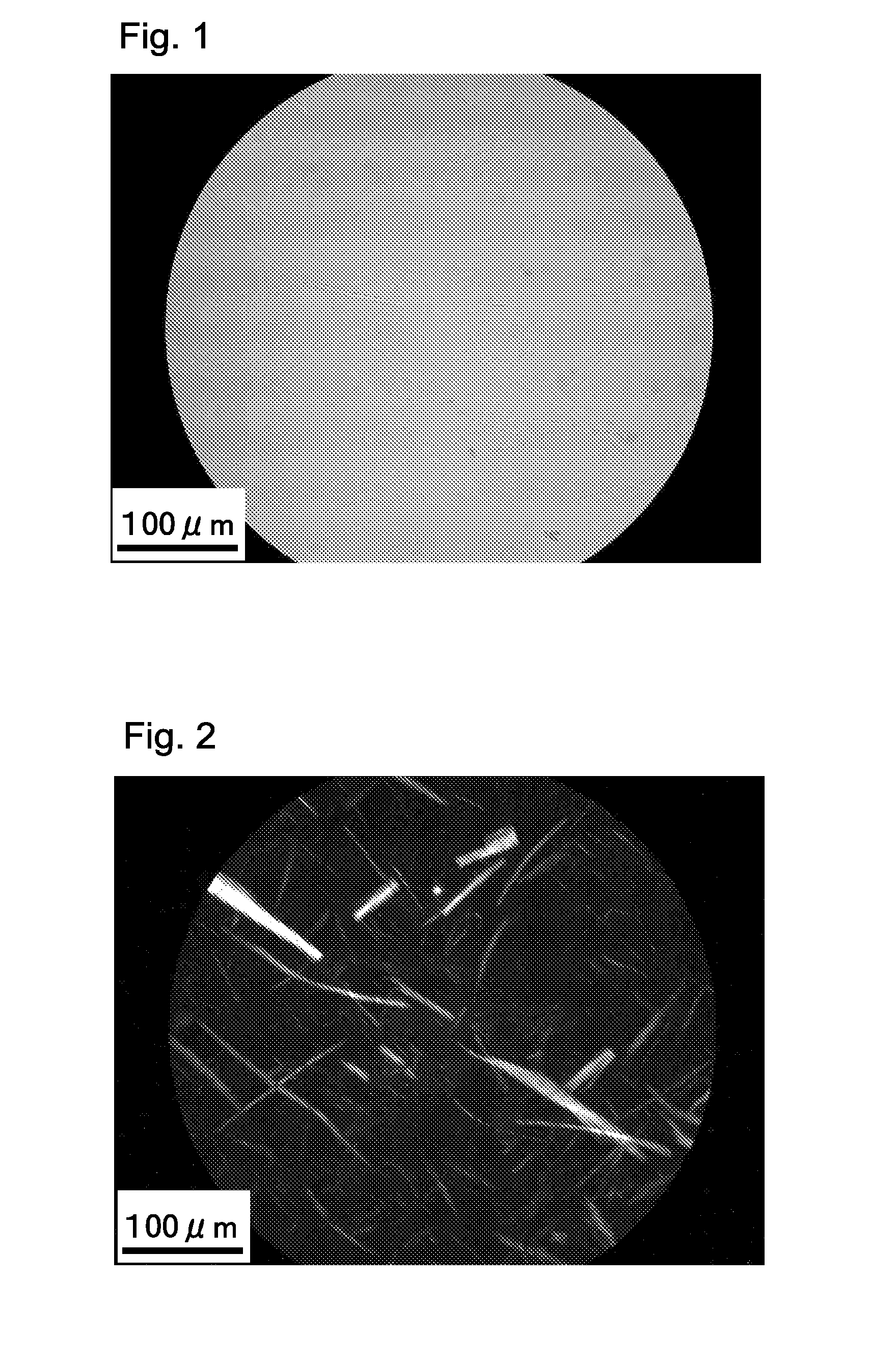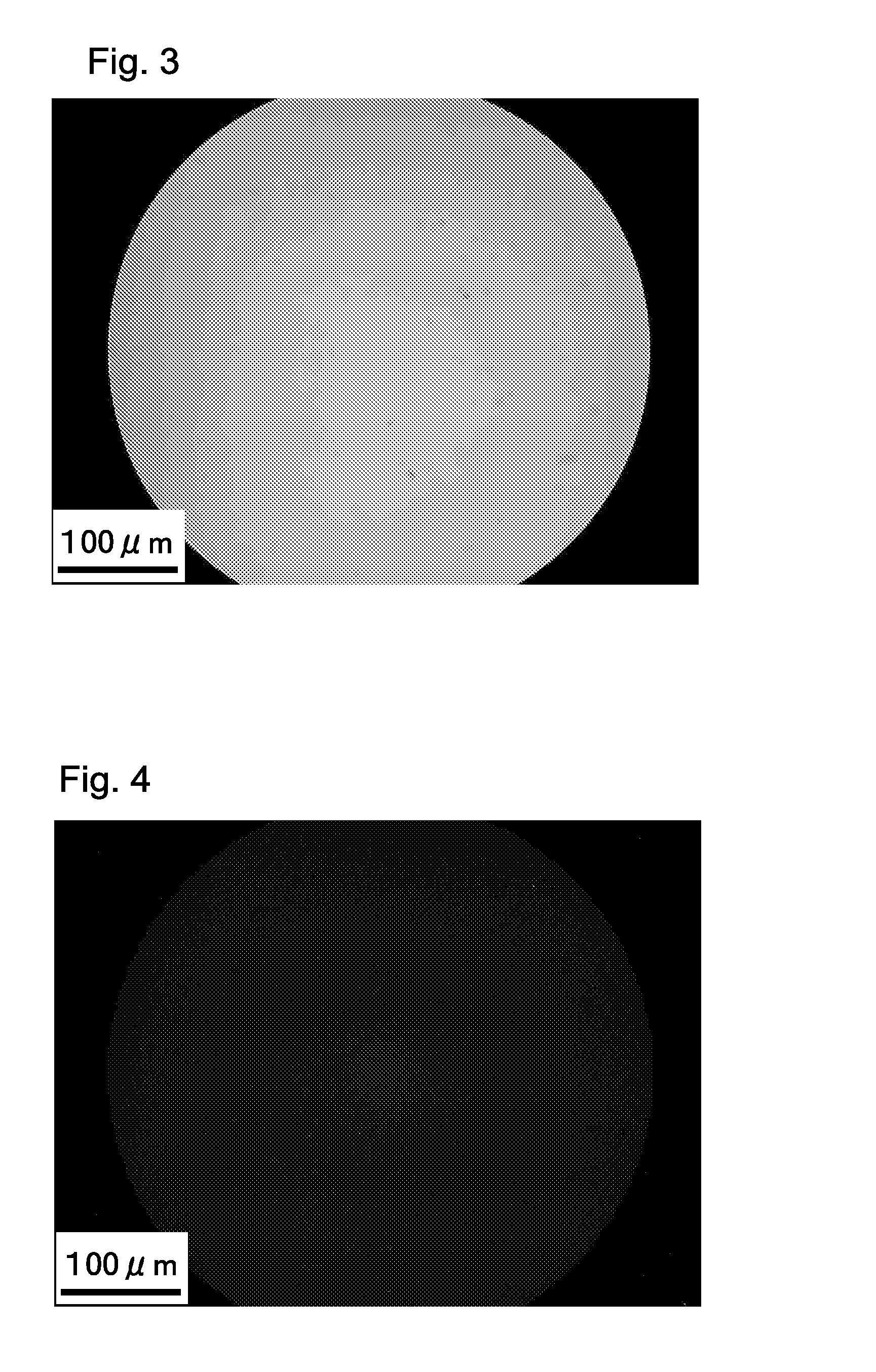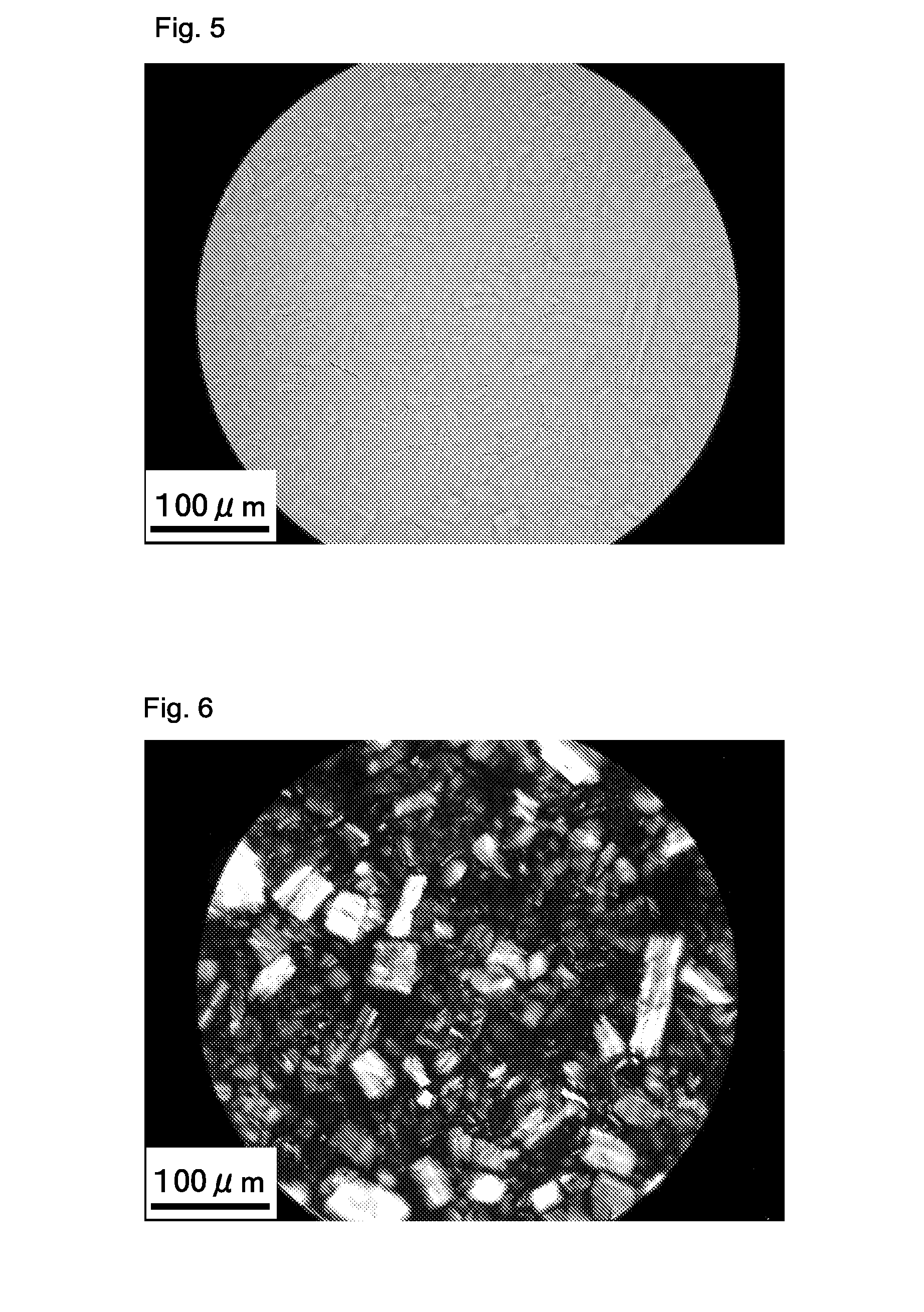Gas barrier material
- Summary
- Abstract
- Description
- Claims
- Application Information
AI Technical Summary
Benefits of technology
Problems solved by technology
Method used
Image
Examples
example 1
EXAMPLE 1
[Preparation of Material for Gas Barrier]
(1) Starting Material, Catalyst, Oxidant, and Cooxidant
[0102]natural fiber: bleached softwood kraft pulp (Fletcher Challenge Canada Ltd., trade name: Machenzie, CSF 650 ml)
[0103]TEMPO: commercial product (ALDRICH, Free radical, 98%)
[0104]sodium hypochlorite: commercial product (Wako Pure Chemical Industries, Ltd., Cl: 5%)
[0105]sodium bromide: commercial product (Wako Pure Chemical Industries, Ltd.)
(2) Procedure of Preparation
[0106]3 g of the bleached softwood kraft pulp was sufficiently stirred in 297 g of ion-exchanged water. 1.25% by mass of TEMPO, 12.5% by mass of sodium bromide, and 14.2% by mass of sodium hypochlorite were added in this order, the percents being in relation to 3 g by mass of the pulp. The pulp was oxidized for 60 minutes at 20° C. while keeping the pH at 10.5 by dropping 0.5M sodium hydroxide using a pH-stat.
[0107]Then, dropping was stopped to provide an oxidized pulp. The oxidized pulp was sufficiently washed ...
example 2
EXAMPLE 2
[0109]A material for gas barrier was similarly prepared as in Example 1. The material for gas barrier was applied on a side of a poly(ethylene terephthalate) (PET) sheet (trade name: Lumirror, Toray Industries Inc., sheet thickness: 7 μm) as a substrate sheet with a bar coater (#50), dried for 120 minutes at 23° C. to provide a molded composite having gas barrier properties. The molded composite was measured for properties shown in Table 1.
example 3
EXAMPLE 3
[0110]A material for gas barrier was similarly prepared as in Example 1. The material for gas barrier was applied on a side of a polylactic acid (PLA) sheet (subjected to a corona discharge treatment, sheet thickness: 25 μm, trade name: PG Palgreen LC-4, Tohcello Co., Ltd.) with a bar coater (#50), dried for 120 minutes at 23° C. to provide a molded composite having gas barrier properties. In application, since the polylactic acid sheet exhibited water repellent effects even though the sheet was previously subjected to a corona discharge treatment, the material for gas barrier was mixed with 30% by mass of isopropyl alcohol and applied to the sheet. The molded composite was measured for properties shown in Table 1.
PUM
| Property | Measurement | Unit |
|---|---|---|
| Percent by mass | aaaaa | aaaaa |
| Percent by mass | aaaaa | aaaaa |
| Thickness | aaaaa | aaaaa |
Abstract
Description
Claims
Application Information
 Login to View More
Login to View More - R&D
- Intellectual Property
- Life Sciences
- Materials
- Tech Scout
- Unparalleled Data Quality
- Higher Quality Content
- 60% Fewer Hallucinations
Browse by: Latest US Patents, China's latest patents, Technical Efficacy Thesaurus, Application Domain, Technology Topic, Popular Technical Reports.
© 2025 PatSnap. All rights reserved.Legal|Privacy policy|Modern Slavery Act Transparency Statement|Sitemap|About US| Contact US: help@patsnap.com



